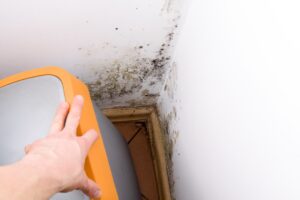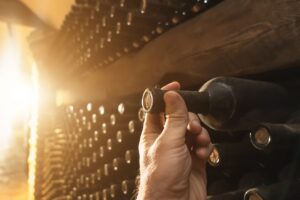It’s been a long, cold winter in our part of the world and I, for one, am more than ready for spring to arrive.
However, warmer weather means higher chances of mold growing in or around your home.
Here are a few spring cleaning tips to be at the top of your mold prevention game.
Spring Cleaning – The Household Mold Prevention Version
When you think of spring cleaning, I doubt mold prevention comes to mind, but it’s one you definitely need to add to your checklist.
Warmer weather leads to higher levels of humidity and that, in turn, leads to mold growth. If you know what to look for, you have a better chance of having a mold-free house and enjoying your summer like you should.
Basement
Let’s start with one of the more obvious places you would look for household mold. Basements are prime realty in the mold world as they have everything mold loves. They’re typically damp and dark, and have a variety of feeding sources for mold to munch on.
When you check your basement, look for cracks or crevices in your foundation and walls. Mold can hide in minuscule places so, on areas you can’t see with your naked eye, use your nose. Mold has a distinctly musty odor so pay attention to any smells you come across in your basement check.
Another item to look for are feeding sources. When it comes to food, mold is not a picky eater. In fact, one of its favorite things to eat is cellulose, which is in a large variety of items, ranging from your carpets to your curtains to wood. If you’re storing any old clothes or carpets in your basement, make sure you move them away from your walls or any areas that are prone to moisture.
Attic
The attic is another popular place for household mold. With higher humidity levels, it’s easy for mold to set up shop in any areas where moisture is present. In the spring, there are greater swings in temperature, which lead to higher evaporation levels.
Check any areas on your ceiling where moisture might be getting in, such as a leaky roof. Also keep an eye out for any signs of animal nests up there. If an animal is able to make its way into your attic, that’s a sure sign moisture can as well.
Repair any roof leaks you might find, and also check in and around your HVAC system. This leads me to my next point.
Furnace and Air Conditioning
The air ducts of your house provide lots of opportunities to grow mold. Especially in the spring, as most people aren’t completely finished using the heat and they’re not completely dependent on air conditioning yet. These changes in temperature can lead to moisture in your air ducts.
This is an area you can’t just casually check on your own, so if you suspect you have mold, you might need to call in a repairman to check for you. If you do find mold, that’s when you call us.
Landscaping
Finally, you should take a look at your landscaping. Depending on how your landscaping is formed can promote or prevent water from getting inside your house. Landscaping that slopes downward and toward your house creates tiny rivers that lead directly to your basement or foundation.
In most climates, spring means heavy rain and thunderstorms. A downward sloping landscape is something you want to avoid because a flooded basement and household mold removal afterwards probably isn’t how you plan on spending those sunny spring weekends.
Call Us
If you run through your spring cleaning checklist and do stumble on some mold, don’t panic. It’s a really common problem, but it’s one you want to get taken care of as soon as you can. If you have any questions, feel free to call us. Our team of certified professionals would love to answer any questions you might have.







